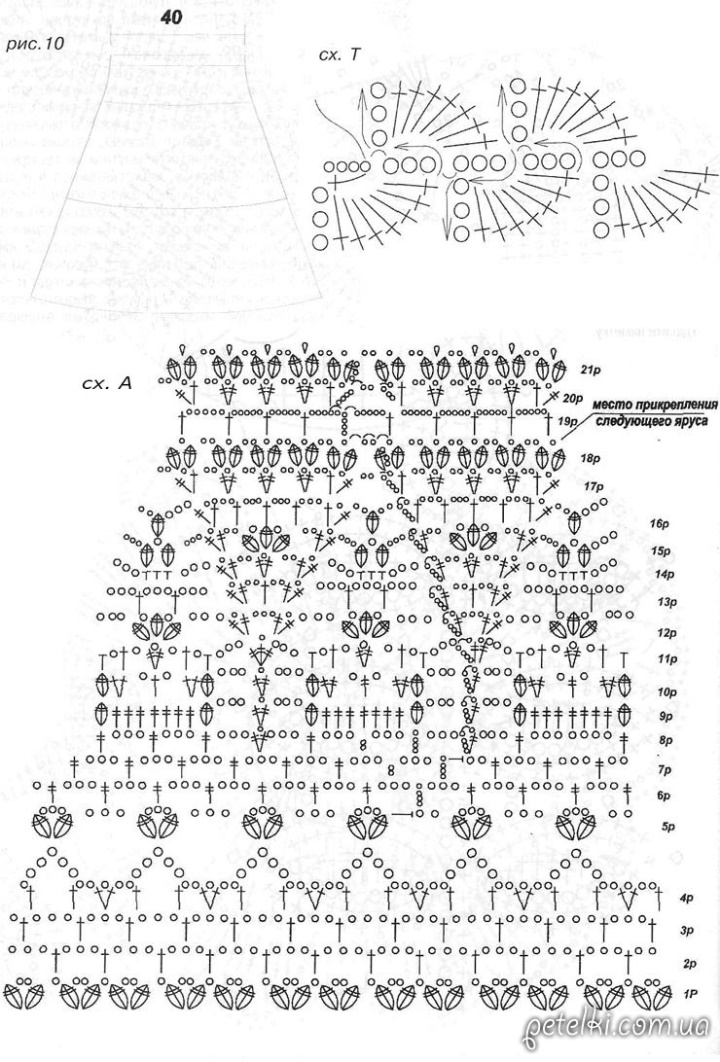You will need: 700 grams of 100% mercerized cotton produced by the Pehorka factory (330 m / 100 g); hooks number 1,5; 2, 2.5; satin ribbons.

The manufacture of the skirt begins with a knitting strip, which will become the belt of the skirt. Hook No. 2,5, type the chain VP slightly wider than the waist. Hook No. 2 knit two rows of RLS, 2 rows of CIH, 2 rows of RLS. On the basis of this belt, tie two rows of arches from 4 VPs, from 5, 6 and 7VP. The height of the coquette is approximately 12 cm. Lay down the knitting and, according to the 'T' scheme, tie the braid to the size of the bottom of the coquette. Sew her. And from the braid, knit the fabric of the first tier of the skirt according to scheme A, which depicts one tier. The extension of the skirt occurs during the recruitment of the second tier: on the 18th row VI, dial additional cells to increase the number of rapports. Continue knitting with b of a series of scheme B. Under 19-21 rows of the first and second tiers, sew a satin ribbon.
Tie a belt 2.5-3 cm wide, 85-90 cm long. The belt should be slightly wider than the belt and tight, so take the hook number 1.5. Tie the loops in narrow strips and sew to the skirt. Belt buckle tie one row next to the RLS and "step by step". The editors offer one more scheme for a two-tiered skirt with a proven time and a demand for today's "pineapple" pattern (Scheme B). The scheme contains more rows, the skirt can get longer. Attachment of the second tier is best done in the 26th row of the B scheme. The ribbon sewn under the 27-31 rows will emphasize the pattern of the wide ruff.